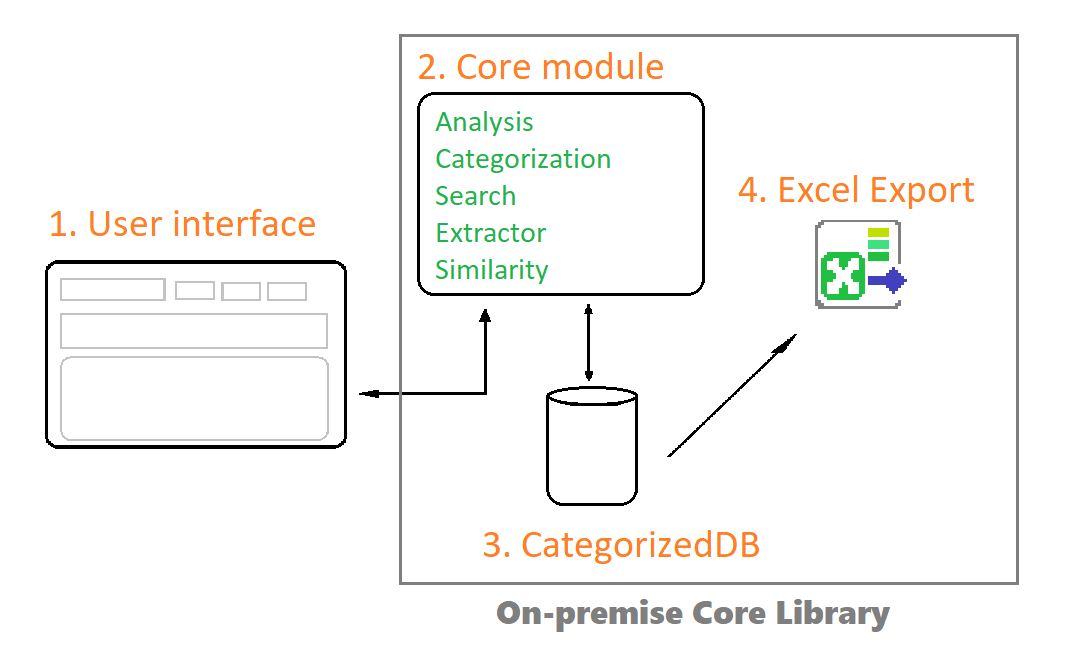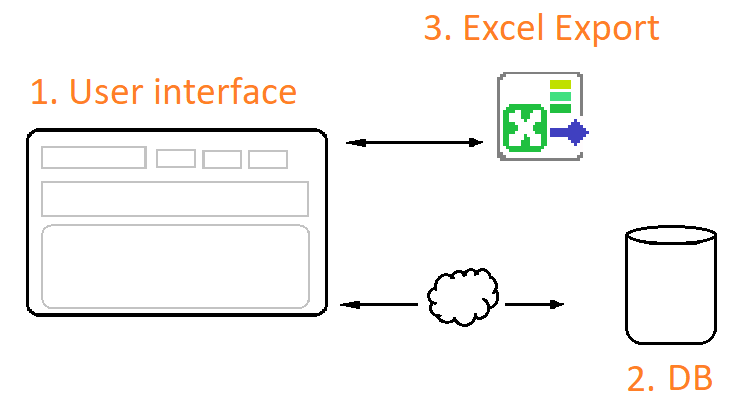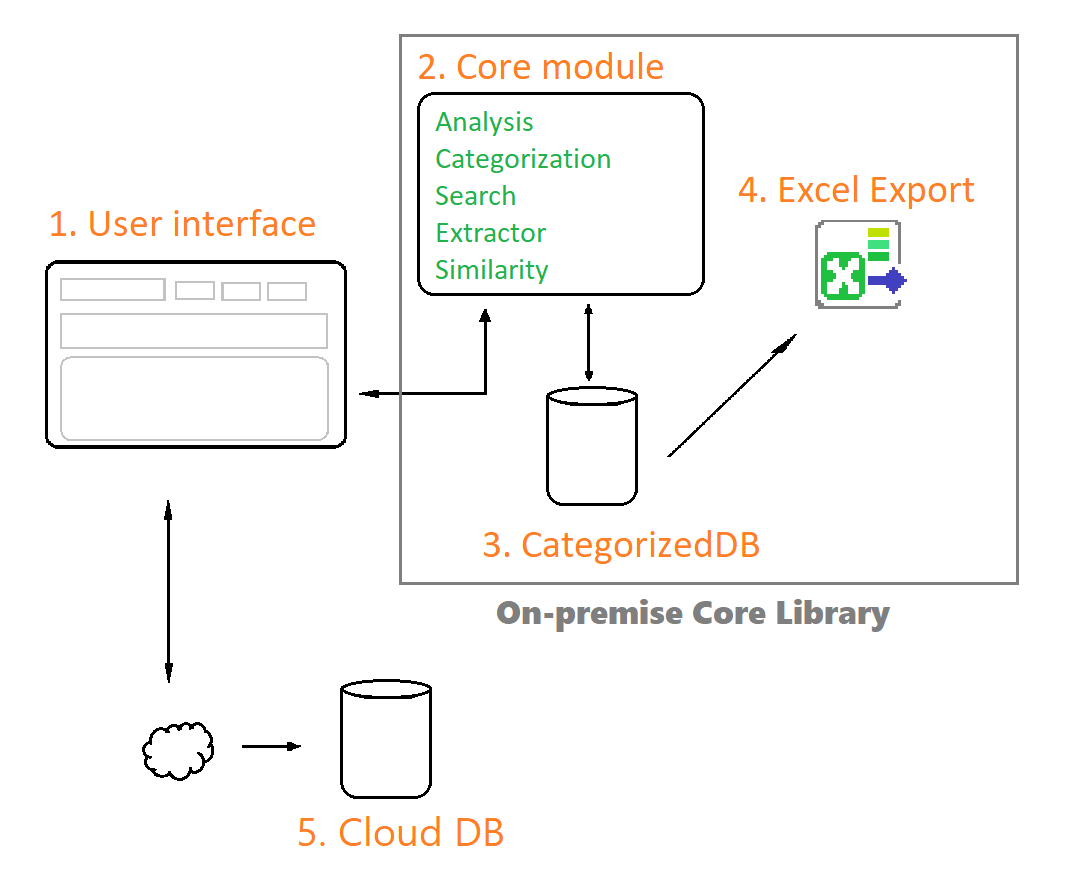Introduction:
Our proprietary database which is low energy consumption, high efficiency and on-premises design. This database can save more energy, reduce CO2 emission and provide highly data protection.
This article introduces our database core library which written by C++ supports in Android, iOS, MacOS and Windows OS.
Energy saving
Our database is low energy consumption. The database doesn’t need any network port connection (save the energy on network card power consumption), no TCP/IP handshaking, no radio transmission in mobile, no need any SQL statements, finally the total access time is low. It does not need high speed CPU. The total power consumed by the database is small when compared to the existing SQL based database (Postgres, MySQL etc.).
Benefit on energy saving
Reduce CO2 emission can gain carbon credits. Low power consumption lets to save more energy in hardware layer. First is fast access time with very low CPU execution cycle, CPU generate much less heat. The power consumed from cooling fan of CPU is dropped dramatically, the overall power reduced. The cooling period will be smaller than using existing database, the energy consumed in server room is dropped. This is a series of effects, low CPU execution cycles, less heat generated, slower cooling fan, less air-conditioning in server room. Save energy can apply for the carbon credits.
More on-premises, less cloud
14 years ago, one founder of company is a pioneer of cloud, he worked hard, but the market is very small at that moment.
Now, cloud services are everywhere, and cloud is extremely convenient. What are the problems of using cloud?
- electricity
- network connection
- network speed
- security, privacy, leakage
- network outage
- data storage
- data lost
- backup scheme
When everything in cloud, users are lost the control of their information including privacy, confidential contract, personal details and connection details.
Without stable electricity (in cloud side), then the network is disconnected to everywhere. Stable electricity but without stable connection, the slow response lets user stuck on the data refresh, synchronisation. Finally, user may do nothing.
When we are using cloud conveniently, we won’t aware the outage. The crisis is we are losing awareness of outage. We need more on-premises and reduce clouds with balance decision.
On-premises database
There was a short journey from on-premises data storage to cloud storage service (starting from 2006).
There are only a few forms of cloud storage services. There is web storage for web applications, purely file storage and purely database storage.
Web application must include cloud database (MySQL, MS SQL server, Oracle SQL Database, PostgreSQL etc.). Most mobile applications (SAP, ERP, CRM) also need cloud storage (e.g. Firebase storage); most APIs are designed for cloud storage access too (web access APIs such as Dropbox).
Web access, mobile application, APIs connection all need database. Database played an important role in the cloud storage service.
Why did we develop an on-premises database? The main idea is to disconnect from the internet then energy saving. For small and medium enterprises, disconnecting from the internet has a lot of benefits. Most important one is saving money, not only the internet cost, but also infrastructure from server setup to storage backup cost. Moreover, every transaction is local (on-premises), users don’t need to care about the network outage, electricity shortage, privacy, and data leakage.
For real time transactions, users still can choose cloud-based services. For non-real time but need data synchronisation, the suitable choice is hybrid mode, fast local transaction and export the data to local storage then import the data to cloud based services.
The concept of our on-premises database is providing the hybrid or purely localisation storage.

Figure 1 is our database design; User Interface connect to standalone database core library.

Figure 2 is a common cloud database design; User Interface connect to relational database.

Figure 3 is a hybrid mode; User Interface connects to cloud database design for backup and use local database for data processing and analysis.
It is really difficult to promote the on-premises database at this moment, but every invention is needed to prepare the “growth” in future. We can foresee the need for the on-premises database, we are not sure when is the coming time, but we prepared for it.
Summary:
Cloud based services are convenient, on the other hand there are many concerns on energy shortages, network stability, data leakage. On-premises design helps to solve the network issue, and also provides the alternative way to save energy.
#onpremises #database #APIs #localisationy #oracle #mysql #mssql #postgresql #cloud #dataleak #dataprivacy #privacy #energysaving #energyefficiency